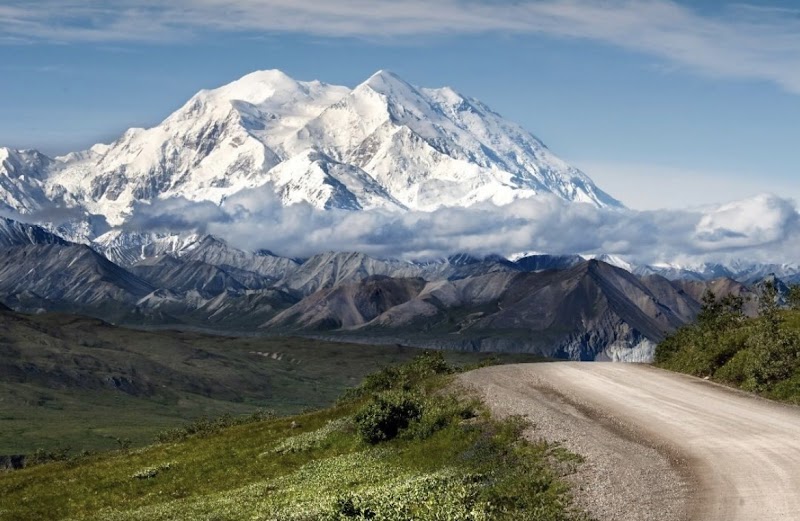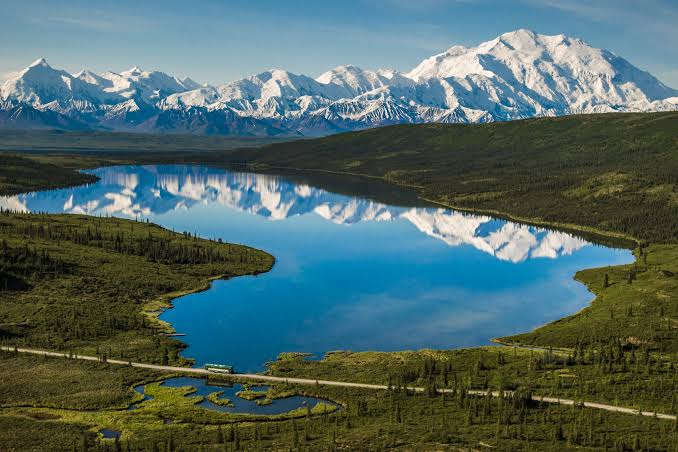Did you know that Denali National Park, covering over six million acres of wild lands, is larger than the entire state of New Hampshire? This pristine wilderness in Alaska is home to North America's highest peak, Denali, and a plethora of stunning attractions like the Polychrome Pass and Wonder Lake. Prepare to be spellbound by its breathtaking landscapes, diverse wildlife, and thrilling outdoor activities that make Denali National Park a bucket-list destination for adventure enthusiasts and nature aficionados.
A visit to Denali National Park is akin to stepping into an enchanting wilderness epic. To help you navigate this expansive saga, a detailed tourist map serves as your guide, ensuring that you don't miss any of the park’s key highlights. This invaluable tool aids you in charting your course, providing an aerial perspective of the boundless wilderness that lies ahead. With a thoughtful itinerary, you're all set to delve deep into the heart of Denali's unique experiences.
Booking.comDiscover the Hidden Wonders of Denali National Park
Denali National Park, with its awe-inspiring landscapes and teeming wildlife, is a paradise for nature lovers. This Alaskan wilderness is more than just the home of North America's tallest peak. It's a place where the adventurous spirit thrives, offering unforgettable experiences through all seasons. Let's explore some of the park's lesser-known but equally fascinating attractions.
1. The Eielson Visitor Center and Surrounding Trails
Don't miss the chance to absorb the panoramic vistas of Denali and the Alaska Range from the Eielson Visitor Center. This picturesque spot, nestled 66 miles into Denali Park Road, serves not just as a rest stop but as a gateway to numerous enticing hiking trails. The Thorofare Ridge Trail, in particular, endows hikers with an awe-inspiring view that stays etched in memory.
2. The Savage River Area
Deviate from the main park road to reach the Savage River Area. This tranquil area, encircled by high ridges and speckled with spruce trees, is a sanctuary for wildlife enthusiasts. Here, you might spot caribou grazing or a lynx stalking its prey. Remember to maintain a respectful distance to ensure safety for both you and the wildlife.
3. Denali's Glacial Landscape: The Muldrow Glacier
While the park's mountains often take center stage, Denali's icy realms hold their unique allure. The Muldrow Glacier, one of the longest glaciers in the park, is a marvel to witness. It's a vibrant testament to Denali's evolving landscape, a testament to the relentless power of nature. For a broader geographical context, consider exploring a tourist map of the United States.
4. The Teklanika River Valley
The Teklanika River Valley stands as evidence of the park's geological wealth. With its braided river patterns and multi-hued cliffs, it's a vibrant canvas of Mother Nature’s artistry. On a fortunate day, you might even spot grizzly bears foraging along the riverbanks.
5. Cultural Connections: The Athabaskan Heritage
Denali isn't just about its natural wonders; it also resonates with ancient tales. The park's cultural history, specifically the legacy of the Athabaskan people, adds a profound human element to the landscape. The Athabaskans' intricate knowledge of this land, reflected in their enduring traditions, provides another perspective through which to appreciate the park. If you're interested in exploring other parks rich in Native American history, you might want to check out the Glacier National Park.
Denali National Park: A Wilderness Like No Other
Exploring Denali National Park is akin to stepping into a realm where nature rules supreme. It's a place where the drama of the wild unravels at every corner, from the silent majesty of glaciers to the thrill of wildlife encounters. Beyond the trodden paths, Denali's hidden charms await, promising an adventure that is as profound as it is exhilarating.

Essential Information for Visiting Denali National Park
Transportation and Mobility
Getting around Denali National Park requires a bit of planning. For most visitors, the most practical way to explore the park is by shuttle bus. The park operates a comprehensive shuttle system that stops at all the main points of interest. Private vehicles are only permitted on the park road up to Mile 15, beyond which shuttle buses are the primary mode of transportation.
Schedules and Prices
The shuttle buses operate from mid-May to mid-September, with varying schedules depending on the season. In the peak summer months, buses run from early morning until late evening. Prices for the shuttle buses range from $26.50 for a short hop to $34.00 for a full-day pass, with discounts available for children and seniors. Remember, entrance fees to the park are separate and cost $15 per person for a week pass.
Safety Tips
While exploring Denali, safety should always be your top priority. Always keep a safe distance from wildlife, and never feed or approach animals. Weather in Denali can change swiftly, so dress in layers and carry rain gear at all times. Keep yourself hydrated and carry enough food supplies. In case of an emergency, get in touch with the park rangers who are trained to assist.
Practical Recommendations
Timing your visit to Denali can significantly enhance your experience. The best time for wildlife viewing is early morning or late evening during the summer months. However, if you're interested in experiencing the stunning fall colors or the tranquility of winter, late August to September would be ideal. Regardless of when you choose to visit, always check the park's official website for the most updated information. For more tips on timing your visit to national parks, consider checking out our guide on Katmai National Park.

Frequently Asked Questions
As a travel expert, I understand that you might have specific queries that remain unanswered. Here are some frequently asked questions about Denali National Park that might help enhance your travel experience.
1. Can I bring my pet to Denali National Park?
While pets are allowed in the park, their activities are heavily restricted to ensure wildlife protection and minimal disturbance to the natural environment. Pets are only permitted within the park road, in parking lots, and campgrounds. They must be kept on a leash at all times and are not allowed on park buses or trails.
2. Are there any unique cultural experiences I can partake in while at the park?
Indeed, Denali National Park provides an opportunity to delve into Alaska's cultural history through its Interpretive Program. This includes sled dog demonstrations, ranger-led hikes, and campfire programs. Do check the park's official website for the most current schedules and offerings.
3. Can I see the Northern Lights at the park?
Yes, viewing the Northern Lights, or Aurora Borealis, is possible at Denali National Park, but it depends largely on the time of year and weather conditions. The best time to witness this celestial spectacle is during the colder months, from late August through early April.
4. Are there any special activities for kids at Denali National Park?
Denali National Park offers a special Junior Ranger Program designed to engage young visitors. This program encourages children to learn about the park's ecosystem, history, and conservation efforts through various fun and educational activities.
5. Do I need to make any special arrangements for differently-abled individuals?
Denali National Park is committed to providing accessible facilities and services for all visitors. Many campgrounds, restrooms, and visitor centers are accessible. However, due to the park's natural terrain, not all trails and outdoor areas are accessible. Contact the park's visitor center in advance for specific information.
6. Is there cell phone and internet service in the park?
Cell phone service in Denali National Park is limited and unpredictable due to the park's remote location. Internet access is available at the Denali Visitor Center and the Murie Science and Learning Center, but it may not always be reliable. It's advisable to plan for periods of digital disconnection during your visit.

